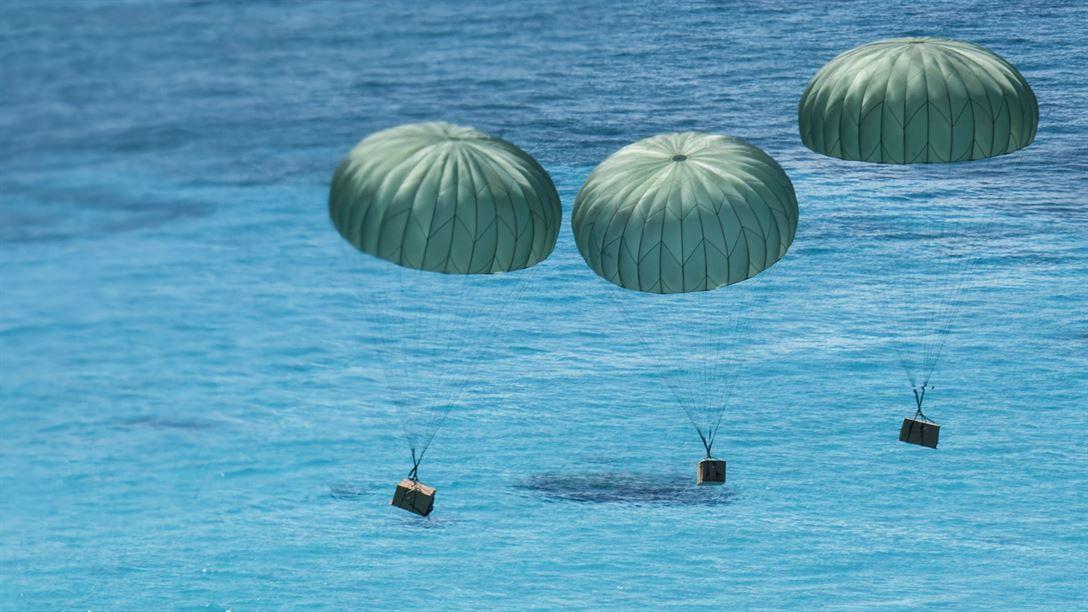
Sea state
During his visit to Beijing, Australia’s Chief of Navy, Vice Admiral Tim Barrett, was formally rebuked by his Chinese counterpart. Chinese Navy commander Shen Jinlong condemned the Australian Navy for having ‘compromised the overall trend of peace and stability in the area’. The rebuke came as the Asia Maritime Transparency Initiative published new analysis showing that China has built 72 acres of new islands in the disputed South China Sea this year. Beijing claims that its island-building is peaceful ‘except for appropriate self-defence’.
President Donald Trump signed the 2018 National Defence Authorization Act on Tuesday, making the target of a 355-ship US navy official government policy. The act doesn’t specify a timeframe or give funding details for the expansion. Funding is a particular concern given the restraints put on government spending by the 2011 Budget Control Act. The lack of clarity from the government means that American shipbuilders haven’t yet taken steps to prepare for an increase in production.
Indian minister of defence Nirmala Sitharaman announced this week that India has launched its second nuclear-powered ballistic missile submarine. The indigenously designed Arighant was launched in November and was ‘built with extensive Russian design and technical support’.
Flight path
Defence Minister Marise Payne took to Twitter to congratulate the six graduates of the RAAF fast-jet pilot course. Among them were two women—the RAAF’s first female fast-jet pilots. You can find an overview of ‘female firsts’ in the air force here.
Christmas is near and the 2017 iteration of the US military’s ‘longest running humanitarian airlift operation’ is in full swing. Operation Christmas Drop is a training exercise to improve the military’s humanitarian aid capabilities—along with strengthening interoperability with participating Japanese and Australian forces. The mission delivered supplies to more than 20,000 people in remote Micronesian communities over an area of around 6 million square kilometres in the West Pacific. Photos can be found here and video footage here.
With battlegrounds shrinking in Syria, a serious clash between Russian and US forces may be only a matter of time. In an incident confirmed by the Pentagon, two Russian Su-25s entered the airspace east of the Euphrates River that’s controlled by the US-led coalition. US F-22s fired warning flares, released chaff and tried to communicate with the Russian pilots through an emergency radio channel. But the Russian jets only left the area after 40 minutes of ‘multiple manoeuvres’ and a near-collision.
Rapid fire
The final results of the ADF blood donation challenge are in and the army has landed in first place, with 2,666 donations. The Defence organisation beat its own target of 7,000 donations: a national total of 7,314 will positively affect almost 22,000 lives.
AP reports that the private military contracting firm Wagner has deployed thousands of Russians to Syria to fight Islamic State. The report is the result of investigative work by the newspaper Fontanka and the Conflict Intelligence Team. Most of the Russians were attracted to join Wagner by the money. Their deaths don’t appear on official records and allow the Russian government to present low casualty numbers. Russian law officially ‘forbids the hiring of mercenaries or working as one’.
The British army’s Exice Maiden team is the first all-female team to attempt to cross Antarctica from coast to coast only using muscle power. On Sunday, the six women, who all serve in the army or army reserve, reached the South Pole, marking the completion of the first third of their journey. Their reaction to reaching the pole is captured in a blog post on their website titled ‘Hello from the bottom of the earth!’.
Zero gravity
In the New York Times this weekend, two F/A-18F Super Hornet pilots revealed that in 2004 they saw an unidentified flying object during a routine training flight 100 miles out in the Pacific. Video footage has confirmed the pilot’s testimony. UFOs have long been the subject of the public’s collective imagination, and the object of study by the US Department of Defense. An accompanying New York Times article reveals details of the Advanced Aerospace Threat Identification Program, which oversaw UFO sighting investigations at the Pentagon from 2007 to 2012.
A SpaceX Dragon capsule has made it to the International Space Station in time for Christmas, after being launched by a Falcon X rocket making its second flight. The successful launch of the reusable rocket was the 20th by the company, and the 16th success in a row. The launch can be viewed on YouTube (video).
Carol Rääbus from the ABC has written a festive article about astronauts who have spent Christmas in space. During the first manned mission on the moon, Apollo 8 astronauts were also the first to celebrate Christmas in orbit, releasing this video on 24 December 1968.
Wired watchtower
Three men pleaded guilty in a US court to creating the Mirai botnet and using it for financial gain. Mirai, which infected more than 300,000 devices, was used to carry out distributed denial-of-service attacks. The men monetised the botnet by renting it to others and ‘demanding payments to halt attacks’. To create ‘plausible deniability’ for Mirai, Paras Jha, one of the creators, published the botnet’s source code online, which led to other attacks.
Security firm FireEye detected and responded to a ‘watershed’ cyberattack on Triconex industrial safety systems in the Middle East. Triconex is used ‘in the energy industry, including at nuclear facilities, and oil and gas plants’. The system was compromised by malware known as Triton, which can prevent safety mechanisms from functioning as intended. FireEye released a statement saying that the attacker was ‘developing the capability to cause physical damage’.
The US army’s experience of cyber operations against IS could shape the future of combat. A unit called Joint Task Force Ares in the US Cyber Command worked with intelligence, cyber, special ops, and international partners against IS. General Raymond Thomas, the head of US Special Operations Command, said the military can ‘only achieve exquisite effects like this’ by combining various capabilities, ‘including cyber weapons’.